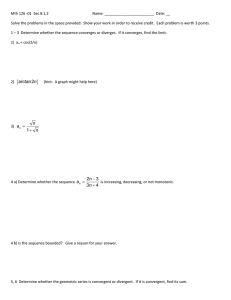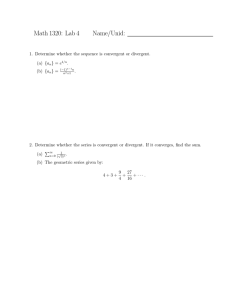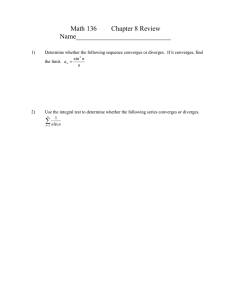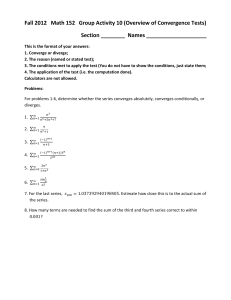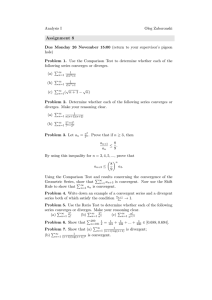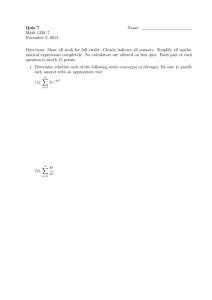Math 110 Exam 2 Name April 10, 2006
advertisement
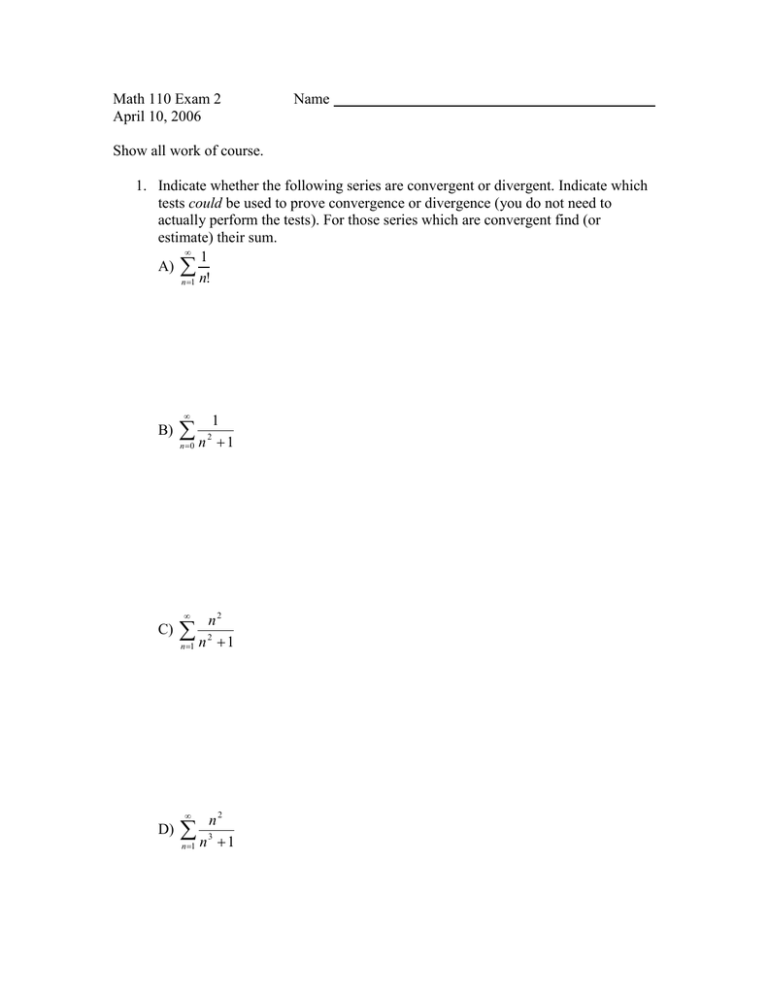
Math 110 Exam 2
April 10, 2006
Name
Show all work of course.
1. Indicate whether the following series are convergent or divergent. Indicate which
tests could be used to prove convergence or divergence (you do not need to
actually perform the tests). For those series which are convergent find (or
estimate) their sum.
1
A)
n 1 n!
B)
n
n 0
2
1
1
C)
n2
2
n 1 n 1
D)
n2
3
n 1 n 1
2. Give examples, if possible. If not possible, say why not.
A) A sequence that converges to e
B) A series that converges to e
C) A sequence {an} such that
a
n 1
D) A divergent geometric series
E) A divergent alternating series
n
diverges but
(1)
n 1
n
a n converges
3. Use the integral test to prove that the p-series
1
n
n 1
p
converges if p > 1 but
diverges otherwise. Note that p = 1 is a special case and needs to be treated
separately.
4. A) Write the Maclaurin series (Taylor series about 0) for f ( x) e x . Show at least
four nonzero terms.
B) Use the result in part (A) to write the Maclaurin series for f ( x) e x , still
showing at least four nonzero terms
2
C) Use the result in part (B) to write an alternating series which converges to
1
e x dx
2
0
1
D) Estimate
e x dx by adding or subtracting the first three nonzero terms.
2
0
E) According to the error analysis for alternating series, (not Lagrange’s error
bound for Taylor series), what is an upper bound for the error in the
approximation of part (D)?
5. A) A function f has f(3) = 1, f ' (3) 5 , and f ' ' (3) 10 . Find the best estimate
you can for f(3.1)
B) Suppose 10 + 9 + … is a geometric series. What is the sum of the series?
